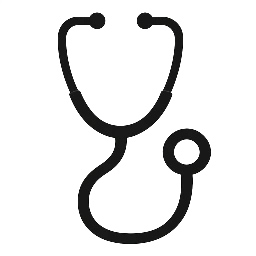An Asian American Woman With Bipolar Disorder
An Asian American Woman With Bipolar Disorder
The client is a 26-year-old woman of Korean descent who presents to her first appointment following a 21-day hospitalization for onset of acute mania. She was diagnosed with bipolar I disorder.
Upon arrival in your office, she is quite “busy,” playing with things on your desk and shifting from side to side in her chair. She informs you that “they said I was bipolar, I don’t believe that, do you? I just like to talk, and dance, and sing. Did I tell you that I liked to cook?”
She weights 110 lbs. and is 5’ 5”
ORDER COMPREHENSIVE NURSING SOLUTIONS NOW
SUBJECTIVE
Patient reports “fantastic” mood. Reports that she sleeps about 5 hours/night to which she adds “I hate sleep, it’s no fun.”
You reviewed her hospital records and find that she has been medically worked up by a physician who reported her to be in overall good health. Lab studies were all within normal limits. You find that the patient had genetic testing in the hospital (specifically GeneSight testing) as none of the medications that they were treating her with seemed to work.
Genetic testing reveals that she is positive for CYP2D6*10 allele.
Patient confesses that she stopped taking her lithium (which was prescribed in the hospital) since she was discharged two weeks ago.
MENTAL STATUS EXAM
The patient is alert, oriented to person, place, time, and event. She is dressed quite oddly- wearing what appears to be an evening gown to her appointment. Speech is rapid, pressured, tangential. Self-reported mood is euthymic. Affect broad. Patient denies visual or auditory hallucinations, no overt delusional or paranoid thought processes readily apparent. Judgment is grossly intact, but insight is clearly impaired. She is currently denying suicidal or homicidal ideation.
The Young Mania Rating Scale (YMRS) score is 22
You will be asked to make three decisions concerning the medication to prescribe to this client.
Be sure to consider factors that might impact the client’s pharmacokinetic and pharmacodynamic processes.
At each decision point stop to complete the following:
Decision #1
Which medication did you select? Lithium 300mg BID,RESULTS OF DECISION POINT ONE
Client returns to clinic in four weeks
Client informs the PMHNP that she has been taking her drug “off and on” only when she “feels like she needs it”
Today’s presentation is similar to the first day you met her. Support your response with evidence and references to the Learning Resources.
What were you hoping to achieve by making this decision? Support your response with evidence and references to the Learning Resources.
Explain any difference between what you expected to achieve with Decision #1 and the results of the decision. Why were they different?
Decision #2
assess rationale for noncompliance, to elicit reasons for noncompliance, and educate client to drug effects and pharmacology. Client returns to clinic in four weeks
Client states that the drug makes her nauseated and gives her diarrhea
Client states that she stops taking it until these symptoms abate, at which point she re-starts only to experience the symptoms again
Support your response with evidence and references to the Learning Resources.
What were you hoping to achieve by making this decision? Support your response with evidence and references to the Learning Resources.
Explain any difference between what you expected to achieve with Decision #2 and the results of the decision. Why were they different?
Decision #3
Change Lithium to sustained release, preparation at the same dose and frequency. In this case, the client is having nausea and diarrhea, classic side effects of lithium therapy. Changing the client to an extended release formulation can often prevent these symptoms while at the same time affording the client the benefit of lithium’s mood stabilizing properties. Also, lithium is a good choice for control of mania and has also been shown to decrease risk of suicide, which adds to its overall benefits. Depakote may be an option if changing to sustained release lithium does not alleviate the side effects. Oxcarbazpine (Trileptal) is an option, but is a second line therapy and is not appropriate at this stage as the client has not had an adequate trial of first line agents.
Support your response with evidence and references to the Learning Resources.
What were you hoping to achieve by making this decision? Support your response with evidence and references to the Learning Resources.
Explain any difference between what you expected to achieve with
Decision #3 and the results of the decision. Why were they different?
Also include how ethical considerations might impact your treatment plan and communication with clients.
Provide a conclusion to your observations with prescribing lithium, the side effects, and what you learned from using lithium and the displayed responses from this patient and their culture and genetics. An Asian American Woman With Bipolar Disorder.

Leave a Reply